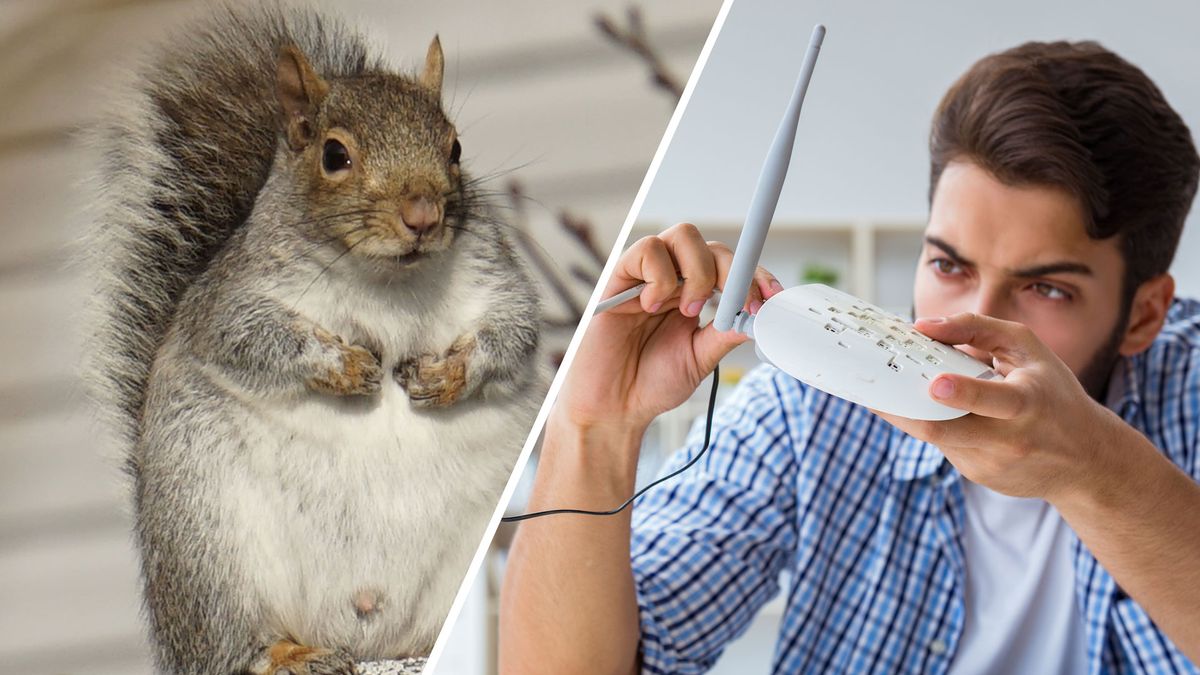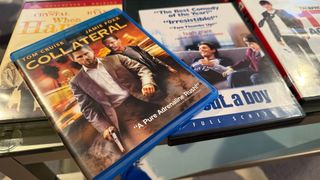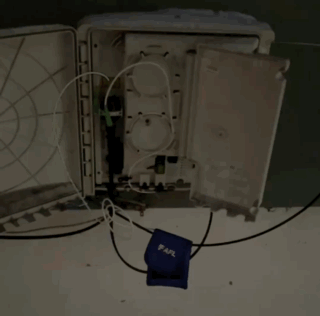My broadband was out for three days, and I don't know if I'm madder at the squirrels or Verizon FiOS
You forget how much you rely on broadband, until it's gone

It left without warning. One second I had 600Mbps of broadband connectivity coursing through my home, the next second, I did not. It blipped out, and four working-from-home souls cried out in agony.
Since I've had brief outages in my Verizon FiOS home broadband service before, I initially chose patience, and waited almost silently, my hands paused over my laptop, willing it to return. It did not, and for the next 72 hours we cobbled together connectivity from the two-bar LTE Verizon wireless connectivity available in my New York neighborhood.
Here's what happens when your home broadband goes offline. Your Wi-Fi still works, and teases you with a solid connection but zero communication with the outside world. Local Wi-Fi doesn't need the internet to work, but it's essentially an empty vessel. The connection is devoid of useful information. There is no cloud.
The wilderness
For the next three days, all my WiFi-connected smart home devices reverted to analog or ceased working altogether. One family member texted me (texting worked over LTE) that they were cold and wanted me to adjust the Nest Learning Thermostat from my phone. I told them they'd have to leave their room to do it, because I couldn't control a thing from my mobile command center.
Siri could still hear me say her name, but couldn't answer any questions, and my Alexa-connected alarm clock lost track of the weather. All of my smart cameras became dumb. My Bird Buddy was no longer my friend, and birds landed, ate seed, and flew away all in front of a blind webcam.
We don't have traditional cable or an antenna, which meant our TV-watching was severely limited.


You can, it turns out, do a fair amount with tethered phones. All of us turned on our personal hotspots and tethered our tablets and even smart TVs to our devices. For about eight hours, this was a decent, if imperfect solution; much of the streaming was of marginal quality.
Get daily insight, inspiration and deals in your inbox
Sign up for breaking news, reviews, opinion, top tech deals, and more.
On day two, we all got messages from Verizon that we had used all but 10% of our hotspot allowance (we're on a family plan), and soon the system would be reducing our throughput to something approximating 3G speeds.
Reconnecting with an old friend
We all stopped most of our stream-based tethering and switched to good old-fashioned DVD, watching About a Boy, Casino Royale, and Collateral on my old Sony Blu-ray player. The remote, which may have purred when we picked it up for the first time in years, was non-functional. The batteries had started leaking. I replaced them, but found that most buttons would only work when pressed with herculean force.
The good news, if there was any, is that it was a weekend, so we mostly didn't have to work. In my world, though, there was the ongoing TikTok drama (almost banned, banned, sort of saved, extended). I did my best to tether my laptop and live-blog the constantly evolving news. Without broadband, it wasn't easy. Uploading images was hard. The system I was working in kept resetting, and sometimes losing my work.
This long holiday weekend also included Presidential inauguration day in the US and, whatever your political affiliation, no one likes to miss history unfolding. We could no longer stream to our big TVs, so we gathered around my iPhone 16 Pro Max, which had the best connection and largest screen to watch the ceremonies and speeches. The feed would cut out every five minutes or so, but it was more or less watchable.

Throughout this ordeal, there was also general frustration with Verizon.
When FiOS first went out, and after restarting my modem and system multiple times, I called Verizon (I tried the app, but it's a mess). That was a Friday. The support tech listened to my issue, but could not confirm any of it because it turned out I was speaking to Verizon Wireless, and they have no direct connection to Verizon FiOS. Go figure. She helpfully connected me to the FiOS people, where I repeated my issue and they told me they had no reports of a wider outage.
The tech informed me that the soonest they'd be able to get to me was Tuesday, almost four days later. I blanched, and told her as politely as I could that that was unacceptable. As is often the case, she had no power to do anything more, but offered to hand me to a supervisor who could probably expedite it and maybe get me help one day earlier. It was a holiday weekend, which I think made finding support technicians even harder.
Hours later I was talking to an extremely helpful Verizon FiOS supervisor, who assured me they could get someone to me on Monday.
The broadband rescue

Monday came and they arrived. That's when I learned that even Verizon knew that multiple neighbors were out – why they didn't tell me this is beyond me. Even my neighbor was in the dark. I saw her outside and she asked if my network was out, I told her it was, which confirmed this was a neighborhood outage. She told me that Verizon asked her to try turning her system on and off before telling her that her neighbors also had an outage. "So why did you ask me to turn my box on and off?" she asked them. I told her that Verizon FiOS was finally on the job trying to troubleshoot this multi-house issue.
The technician climbed some utility poles around the neighborhood until he found one junction box that, it turned out, had been severely abused by squirrels. It took another eight hours for Verizon to fix the box, and even then they discovered a local problem in my FiOS hookup that they had to fix before my broadband returned. Multiple times the technicians asked me if anyone had been messing with my box. I promised them I never touched it.
Finally, as the temperature plummeted late Monday my Wi-Fi network was flush with 600Mbps connectivity. Throughout my home smart devices sprung to life.
There are far worse things than losing connectivity for a few days, but on the list of everyday frustrations, this one gets a 10. Now, if you'll excuse me, I have to go yell at some squirrels.
You might also like

A 38-year industry veteran and award-winning journalist, Lance has covered technology since PCs were the size of suitcases and “on line” meant “waiting.” He’s a former Lifewire Editor-in-Chief, Mashable Editor-in-Chief, and, before that, Editor in Chief of PCMag.com and Senior Vice President of Content for Ziff Davis, Inc. He also wrote a popular, weekly tech column for Medium called The Upgrade.
Lance Ulanoff makes frequent appearances on national, international, and local news programs including Live with Kelly and Mark, the Today Show, Good Morning America, CNBC, CNN, and the BBC.
You must confirm your public display name before commenting
Please logout and then login again, you will then be prompted to enter your display name.
Most Popular



